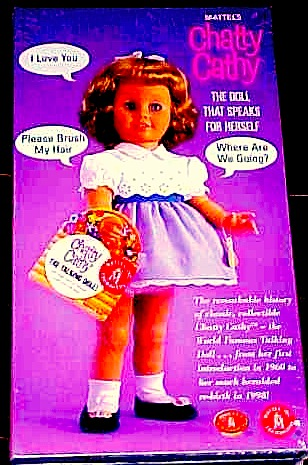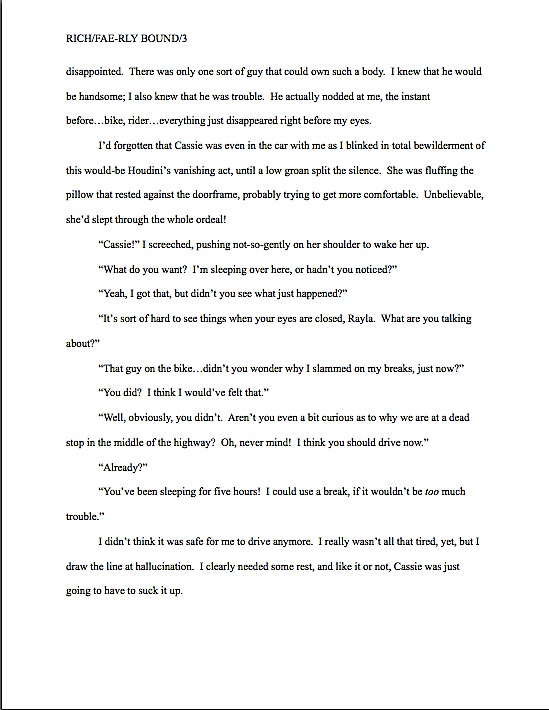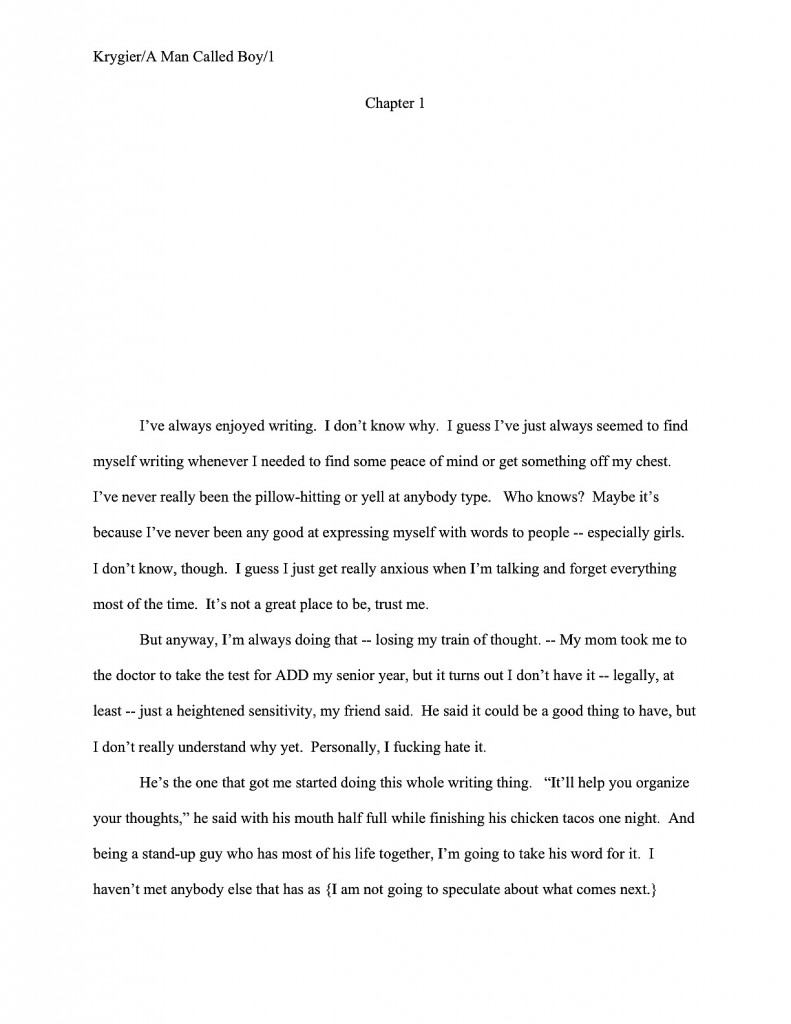
Shh! The houseguests are sleeping, so I have tiptoed into my studio to have a few words with you. Perhaps it is inhospitable of me, but all weekend, I’ve been yearning to log in to warn you further of the horrifying perils of Hollywood narration.
That’s not the kind of yen that makes sense to non-writers, in case you’d been wondering. I believe the term most often being applied to it in my household over the last few days is pathological.
But then, most conscientious revisions would strike outside observers as pretty odd, I suspect. “What do you mean, you’re going to go over every syllable in the book several times?” they demand, wide-eyed. “Isn’t that, you know, the editor’s job, not the writer’s? Why don’t you just send off the manuscript and let the publisher take care of any typos — or whatever it is you think you’ll find on your seventeenth read-through?”
Hoo boy — it’s hard to know even where to start countering that pervasive set of misconceptions, isn’t it? Rather than engaging in a lengthy explanation that will only depress all and sundry, let’s get back to the matter at hand.
Last time, I introduced you to Hollywood narration, the perplexing practice wherein backstory is conveyed by dialogue between persons who both already know the information perfectly well — and thus have absolutely no legitimate reason to be having that particular conversation at all. Interestingly, writers who pride themselves on the pursuit of realistic dialogue are every bit as likely to incorporate Hollywood narration as those who do not.
It’s just so darned convenient. Particularly if a reviser is editing for length: a paragraph or two of Hollywood narration can, after all, replace pages and pages of backstory.
But page-slashing self-editors are not the only writers fond of Hollywood narration, unfortunately. Many a first-time novelist or memoirist has panicked at the notion that the reader will walk into a story without knowing basic facts about the participants. As a result, our old pal Millicent the agency screener is constantly confronted with opening pages that read something like this.

Did any of that seem a trifle unnecessary to you? It would to Millicent, or indeed to most readers. For this scene to work, we don’t actually have to know how old these people are, how long they’ve been married, or even how long little Tara has been sleeping through the night. We certainly don’t need to hear about all of that on page 1; these tidbits could pop up naturally as the story progressed.
Or, to put it in editing terms, most of those statements of fact slow down the story, rather than adding to it, at least at this juncture. To grab the reader, this opening scene needs to present Helga and Chaz as interesting people in an interesting situation — so why take up page space with matters that, while important in and of themselves, are not integral to the conflict at hand?
Heavy-handed application of backstory isn’t solely the province of dialogue, of course (as that whopper of a sentence in the second paragraph proves abundantly). Most first novel manuscripts (and quite a few first memoirs as well) produced within the last thirty years or so have leaned pretty heavily upon dialogue to introduce facts that both parties already know, for the exceedingly simple reason that we’ve all heard it done so much in movies and on TV.
Thus the term Hollywood narration: all too often, writers forget that having a character essentially narrate backstory or fundamental facts crops up in movies because film is limited in how it may convey the past. On the printed page, however, we have more — and more interesting — options than having a character start waxing poetic about the past to people who shared that past, don’t we?
Before we go any further, and to save confusion in critique groups and editorial conversations in the dim, uncertain future, I should point out that the term Hollywood narration is mine; the agent of your dreams may well look at you blankly if you mention it. She will undoubtedly be familiar with the phenomenon, however: due to its continual widespread unpopularity amongst aspiring writers, it is cursed under many names throughout the publishing world. My personal favorite is the SF/fantasy moniker, as you know, Bob… dialogue.
Whatever you like to call it, as far as I’m concerned, it’s one of the scourges of both the modern publishing industry and the screenwriters’ guild.
What’s so wrong with it on the manuscript page? From a reader’s perspective, Hollywood narration in dialogue is effectively an interview scene with no interviewer but the author.
The reader is left to wonder: why the heck is that chattering character responding to questions that no one has actually asked him — and furthermore, whose answers must come as a mind-numbing bore to the character to whom he’s saying it? Why, in fact, is this monologue (or dialogue; both Helga and Chaz engaged in Hollywood dialoguing above) appearing on the page at all?
As we discussed last time, the answer to all of those questions usually disarmingly straightforward: because the writer wants the reader to learn the answers to those questions, that’s why. So much so that the characters’ motivations and listening preferences are ruthlessly disregarded in favor of audience enlightenment.
Anyone see a teensy problem with this narrative strategy? Anyone?
No? Well, I could just tell you that Hollywood narration has the characters tell what the narrative doesn’t show — but it would be far, far more effective to show you, wouldn’t it? Especially since it isn’t always easy to catch in revision.
Oh, you may laugh, recalling the throw-a-brick-through-the-nearest-window subtlety of the example above, but sometimes, Hollywood narration can be very low-key. You’d actually have to be looking for it. As you should be, ideally, in the following:
Lois did a double-take at the stranger — or was he? It was so hard to tell behind those thick, black-rimmed glasses. “You remind me of someone. Funny that I didn’t notice it before.”
Clark grinned shyly. “It is funny, considering that we’ve been working together for the last five years.”
Did you catch it?
Or rather, I should say did you catch them, since the Hollywood narration cuts both ways here. Surely, both parties have been aware for quite some time — say, five years — of what Clark’s glasses look like. So why is Lois describing them? On the flip side, Clark is also telling Lois something that she must have known for, at minimum, five years. So why is he saying it, other than to let the reader know that they’ve been working together for — wait for it — five years?
And is that honestly sufficient reason to keep this sterling exchange in the text? As a reviser, you should constantly be asking yourself, “Is this really the most effective way to convey this information? Brilliant writer that I am, could I not find a more graceful way to let the reader in on the backstory — or is it possible that the backstory actually is not integral to this scene, and thus could be introduced later?”
Yes, that is quite a mouthful to keep muttering to yourself. It gets easier with practice.
More often, though, Hollywood narration is laid on with a heavier hand, if not a shovel or a backhoe. Sometimes, the helpings are so lavish that they practically constitute a flashback:
“We could always spend the weekend at our rather derelict lake house,” Desmond pointed out. “We’ve owned it for fifteen years now, and I don’t think we’ve stayed in it five times.”
Elaine shrugged, a good trick, considering that her hands were deeply imbedded in the clay turning on the wheel. She was going to need major chiropractic work on her neck some day soon. “That’s not true. We spent a month there when little Betty came down with the measles during the family reunion, don’t you remember? All 117 of us, the whole extended family as far as it could be traced — or at least as far as Aunt Rose managed to trace it in her three volunteer afternoons per week at the Genealogical Society, bless her heart and reading glasses — locked inside after Dr. Stephens nailed the quarantine sign on the door.”
“I remember. It was the worst three weeks of my life.”
“Worse than the time that we and our three kids fell through that hole in the space-time continuum and ended up chasing the guy we mistakenly thought was Galileo for twelve days? Don’t be ridiculous.”
“Which just proves my point,” Desmond said triumphantly. “We need to spend some serious time doing repairs at the lake house. Anyone could tumble through one of those holes and end up in the fourteenth century.”
Reads like an interview scene, doesn’t it? But Desmond didn’t ask Elaine for a recap of their previous adventures — escapades, one hopes, detailed earlier in the book in the reader’s hand, or in a prequel; they sound as though they would be interesting to see fleshed-out, rather than glossed over anecdotally in dialogue. Nor did Sandra represent herself as not knowing how long they had owned the lake house. They were talking about their vacation plans — so why the sudden plunge into backstory?
Even a reader not much given to questioning the printed word might have been brought up short by this passage, as the narrative itself gave a major clue that something’s wrong with this dialogue. But to Millicent and her ilk, the mere fact that Desmond said, “I remember,” is like a neon sign, flashing HE ALREADY KNOWS THIS! fourteen times per minute.
It’s a touch distracting.
Like pretty much every other over-used narrative devices, Hollywood narration can work effectively, if used in miniscule doses and rarely. Unfortunately for Millicent, manuscripts seldom display the trick sparingly, especially in the openings of novels.
Why do those first few pages tend to be prime display space for Hollywood narration, you ask in all innocence? Because, dear friends, few aspiring writers have the patience to allow backstory to reveal itself over the course of chapters; most want to get it out of the way at once.
This is why, in case those of you who have been haunting literary conferences lately had been wondering, so many agents are prone to advising roomfuls writers not to try to cram the entire premise onto the first page — or, when they choose to express it a trifle more politely, to consider waiting until later in the book to reveal background information. “Don’t tell me everything at once,” they beg. “Let me be surprised.”
Good advice: the first page of a novel doesn’t need to include all of the information in the book’s premise. Confident novelists reveal character and situation over the course of an entire book, rather than within the first few paragraphs.
Was that deafening muttering indicative of some discomfort with that last statement? “But Anne,” masses of reveal-it-up-fronters protest, “in your last post, you told me not to have the characters comment to one another on the first few pages; today, you’re trying to dissuade me from having them talk about what happened before the book began. So how on earth am I to introduce these characters to the reader? Telepathy?”
Good question, up-fronters. (Although you might want to watch the sarcasm when you’re asking me to explain something to you as a favor. Your mother cannot possibly know that you’re that flippant with your teachers.) How about opening the book by placing your characters in the middle of a conflict so engaging — and so central to the plot — that the reader quite longs to stick around to find out more about them?
Just a suggestion. It’s always worked for me.
There are a million other ways to introduce characters, of course. Although Hollywood narration might feel satisfyingly efficient — one way to describe cramming a whole bunch of information into just a few lines of text, I guess — it’s actually one of the weakest kind of opening. So much so that anxious conference-goers are sometimes stunned to hear an agent or editor say that he does not like to see a manuscript to open with dialogue at all.
Before the 2/3rds of you whose manuscripts open with dialogue faint, reach for your heart medication, or frantically revise your first pages, let me hasten to add: what this assertion generally means is that the speaker objects to books that open with precisely the type of dialogue that we’ve been discussing, poor interview scenes and Hollywood narration, not to any dialogue, ever.
“How do you know that?” those of you currently clutching your chests demand.
Experience, mostly — and not just editing experience. One of the things that a savvy writer learns by attending many conferences over the years is that sweeping generalizations tend to be common features of conference-given advice; something about sitting on a dais seems to bring out a desire to lay down all-inclusive axioms.
Another way I know is that I read manuscripts for a living, so I have a pretty darned good idea of just how high a percentage of the submissions agents who express this preference see open with Hollywood narration. Trying to stuff backstory into the first few exchanges is awfully common.
The result is, all too often, unrealistic dialogue — and an opening that feels contrived, as in this glorious example of a first scene. I shan’t put this one in standard format; who would blame you if you gave up after the end of page 1?
“So, Ambrose, how was your work at the paper mill today?” Penelope asked, drying her rough hands on the fraying dishtowel that served her as a makeshift apron.
The burly man shook his head. “Having worked there for fifteen years — one before we married, two more before the twins were born, and five years since our youngest girl, Vivienne, fell off the handlebars of Ambrose Junior’s bike and sustained brain damage, forcing me to quit my beloved teaching job and stay home to help her re-learn basic life skills like walking and chewing gum — I sometimes get sick of the daily grind.”
“Did your boss, the redoubtable Mr. Facinelli, terrify you for the fourth consecutive week by sticking his hand into a working chipper to demonstrate how reliable the shut-off mechanism? Doesn’t he recall the hideous accident that deprived your former foreman, Eldon Wheelford, of the use of his left arm, leaving him embittered and lopsided after that unsuccessful lawsuit against his negligent employer?”
“Which he would have won, had Mr. Facinelli’s rich uncle, the mill owner, not bribed his second cousin, the judge. It probably also didn’t help that the entire jury was made up of mill workers threatened with the loss of their jobs.”
“I wish you would stand up to management more.” Penelope sunk her hands into the bread dough that always seemed to be sitting in a moist ball, ready to knead, on the kitchen table. “But you are my husband, my former high school sweetheart, so I try to be supportive of all you do, just like that time I went down to the police station in the middle of the night in my pink flannel nightgown to bail you and your lifetime best friend, Owen Filch, out after you two drank too much near-beer and stole us the biggest Sequoia in the local national park — renowned for its geysers and the annual migration of the canary finch — for our Christmas tree.”
Ambrose stroked his graying head ruefully. “How could I forget? I had gotten you that nightgown for Valentine’s Day the year that little Fatima, then aged six, played Anne Frank in the school play. I never miss one of her performances — nor, indeed, anything that is important to you or the kids. But since our eldest daughter, the lovely and talented Lulu, won that baton-twirling scholarship to State, I have felt that something was lacking in my life.”
“Why don’t you go downstairs to the workshop you built in the basement with the money from that car-crash settlement? You know how much you enjoy handcrafting animals of the African veldt in balsa wood.”
“What would I do without you, honey?” Ambrose put his arms around her ample form. “I’ve loved you since the moment I first saw you, clutching a test tube over a Bunsen burner in Mr. Jones’ chemistry class in the tenth grade. That was when the high school was housed in the old building, you recall, before they had to move us all out for retrofitting.”
“Oh, Ambrose, I’d had a crush on you for six months by then, even though I was going out with my next-door-neighbor, Biff Grimley, at the time! Isn’t it funny how he so suddenly moved back to town, after all those years working as an archeologist in the Sudan?” Ambrose did not respond; he was busy kissing her reddish neck. “But you always were an unobservant boy, as your mother Joanna, all sixty-four years of her, invariably points out when she drops by for her weekly cup of Sanka and leftover cookies from my Tuesday night Episcopalian Women’s Empowerment Group social.”
Okay, so this is a pretty extreme example — but honestly, anyone who has read manuscripts professionally for more than a few weeks has seen narratives almost this bald. Make no mistake: Hollywood narration is telling, not showing in its most easily-identifiable form.
As in Millicent can spot it from a mile away. Or at least within the first line or two.
Like so many transgressions of the show, don’t tell rule, Hollywood narration does provide some definite benefits to the writer who incorporates it. Placing backstory and description in dialogue instead of narrative text is a shorthand technique, a means of allowing the author to skip showing entire scenes — or, even more commonly, to avoid figuring out how to reveal necessary information in a slower, more natural manner.
It is, in short, a trick — which is precisely how a professional reader who has seen it used 500 times this month tends to regard it. Millicent might not see it as necessarily the result of narrative laziness (although it can be that, too), but at least as evidence of a writer’s not being conversant with the many ways a text can convey information to a reader without just coming out and telling him outright.
Is that a thicket of raised hands I see before me, or did half of my readership spontaneously decide to stretch in unison? “But Anne,” some of you point out, and who could blame you? “I don’t quite understand. I see Hollywood narration in published novels fairly often, especially in genre works. Hasn’t it become common enough that it’s simply an accepted storytelling convention by now?”
Good question, hand-raisers or stretchers, whatever you’re calling yourselves these days: you are in fact correct that Hollywood narration has become pretty ubiquitous amongst established authors. But that doesn’t mean that an aspiring writer hoping to break into the book-writing biz is going to win friends and influence people in the publishing industry by embracing it. Submission is definitely one time when you shouldn’t be following the crowd in this respect.
That strikes some of you as unfair, doesn’t it? “But Anne,” I hear large numbers of you sputtering, “can you seriously be arguing that dialogue in movies, on TV shows, and in books first published in English aren’t indicative of what an agent might be looking to find in my novel? How is that possible, when I can find such dialogue on the shelves at my local Barnes & Noble right now?”
I’m betting that the examples you so long to wave at me, oh objectors, are not first novels by North American writers who landed their North American agents within the last five years — and for the sake of this particular discussion, the dialogue in no other books can possibly be relevant. In order to be successful, an aspiring writer’s manuscript usually has to be quite a bit better than what’s currently on the shelves, at least on average.
Why? Long-time readers of this blog, please open your hymnals and sing along with me now: the standards governing established authors — i.e., those who already have published books — is considerably less stringent than those agents tend to apply to the manuscripts submitted by writers seeking representation. Established authors have, after all, already demonstrated that their work can charm at least a few people at publishing houses, if not droves of book-buying readers. A new writer, by contrast, is effectively asking an agent to take a chance on her talent without that kind of a track record.
Speaking of relevant backstory.
Setting aside this marketing reality, however, it’s still a good idea to minimize Hollywood narration in your manuscripts — and not just because relying on it in your opening pages is usually a pretty good way to alienate Millicent’s affection for your storyline darned quick. Readers tend to have a pretty good ear for dialogue; exchanges that might pass muster when spoken by a gifted actor — whose job, after all, is to make lines read plausibly — don’t always ring true to readers. And dialogue that doesn’t ring true, unavoidably, makes it harder for the reader to suspend her disbelief and sink into the world of the story.
Give it a bit of thought, please. Your readers will thank you for it.
Keep up the good work!












































